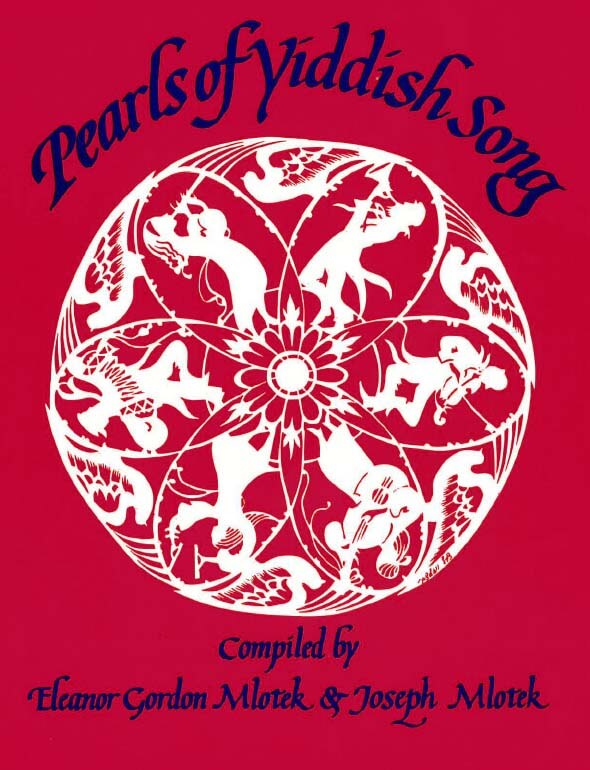Originally entitled “Ver hot aza meydele” (Who has such a girl?) by Janet Fleishman (1907- 1957). Published in sheet music by J. and J. Kammen Music Co., Inc., Brooklyn, N.Y., 1933. It was popularized by actor-singer Herman Yablokoff during the 1930’s on his radio program Der payats (The clown) on WEVD.
It evolved and appeared as a song about a little boy in the song collection Mir zingen in Warsaw, c. 1957. It became popularly known in this form and was recorded in Israel by Mary Soreanu and others. The melody of the first part resembles the song “Ikh hob a kleynem yingele” (I have a little son) by the poet Morris Rosenfeld (1862-1923).

Sent from heaven
as a gift for me,
with a treasure, God has made me happy
beyond bounds.
My world has become bright,
and not from sunshine,
Could even a mountain of money buy
such a son as mine?
Who else has such a son
such a little angel?
With eyes like two little stars,
and a pure little soul.
Dear God, I pray you,
protect and guard him for me.
Watch over my little boy,
a dear little boy.
Fun dem himl tsugeshikt
A matone mir,
Mit an oytser mikh baglikt
Hot got on a shir,
Likhtik vert far mir mayn velt,
Nit fun zunenshayn,
Krigt men den far oytsres gelt
A yingele vi mayn?
Refrain:
Ver hot aza yingele,
A malekhl a kleyns?
Oygn vi tsvey shterndlekh,
A neshomele a reyns.
Liber got, ikh bet bay dir,
Shits un hit im op far mir.
Vakh iber mayn yingele,
A yingele a kleyns!
פֿון דעם הימל צוגעשיקט
אַ מתּנה מיר,
מיט אַן אוצר מיך באַגליקט
האָט גאָט אָן אַ שיעור.
ליכטיק װערט פֿאַר מיר מײַן װעלט,
ניט פֿון זונענשײַן,
קריגט מען דען פֿאַר אוצרות געלט
אַ ייִנגעלע װי מײַן?
רעפֿרײן:
װער האָט אַזאַ ייִנגעלע,
אַ מלאכל אַ קלײנס?
אױגן װי צװײ שטערנדלעך,
אַ נשמהלע אַ רײנס.
ליבער גאָט, איך בעט בײַ דיר,
שײן און היט אים אָפּ פֿאַר מיר.
װאַך איבער מײַן ייִנגעלע,
אַ ייִנגעלע אַ קלײנס!
Song Title: Ver Hot Aza Yingele?

First published in 1988 as Pearls of Yiddish Song: Favorite Folk, Art and Theatre Songs, this anthology contains 115 songs. Some material had never been published, while others, included in rare song collections or sheet music, were largely inaccessible. The songs presented reflect Jewish life in Eastern Europe and the United States and depict childhood, love, family celebrations, poverty, work and struggle. There are also songs from the Hasidic and Maskilic movements, songs of Zion and of America, as well as songs from the Yiddish theater.
The title of this anthology derives from the weekly two-page feature column “Pearls of Yiddish Poetry,” which the compilers Yosl and Chana Mlotek initiated in 1970 in the Yiddish newspaper Der Forvertz (the Yiddish Daily Forward). Hundreds of readers from around the world — including authors, composers, singers, actors — became co-participants in this collective folk project and recalled melodies, lines, fragments, stanzas and their variants of songs, poems, and plays which they had heard in their youth. At first, readers sent in only written material. Later, they also taped songs on cassettes, many of whose melodies had, until then, never been recorded. They also identified and supplied missing information regarding lyricists, poets, and composers and described the circumstances surrounding the songs’ origins, their dissemination, diffusion and impact.